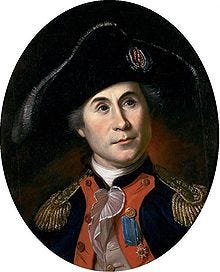Ice cream, the Colvend Coast, and John Paul Jones
A journey through Dumfries & Galloway
I’d like to take a moment to thank you, dear reader. This week marks a whole year (!) of writing these weekly articles — many thanks for reading at least some of them! I hope you’re enjoying it. Plea…
Keep reading with a 7-day free trial
Subscribe to Scotland's Music, Landscape & Events to keep reading this post and get 7 days of free access to the full post archives.


